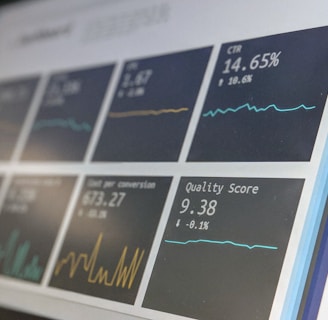The Synergy of AI Automation and Data
4/19/20252 min read


The Synergy of AI Automation and Data
AI automation excels at offloading repetitive, rule‑based tasks—such as data entry, invoice processing, and help‑desk ticket triage—to intelligent bots, freeing employees to focus on higher‑value activities citeturn0search3. Meanwhile, advanced analytics and real‑time data pipelines transform raw operational metrics into actionable insights, enabling predictive scheduling, dynamic resource allocation, and demand forecasting citeturn0search12. When combined, AI and data create a closed‑loop feedback system: automation generates new data about process performance, which in turn refines AI models and drives continuous efficiency gains.
Quantifying Workforce Efficiency Gains
Empirical studies highlight the scale of productivity improvements achievable:
Generative AI performance uplift: Workers with GPT‑4 access outperform peers by nearly 40% on complex tasks.
Economic potential: Corporate AI initiatives could unlock $4.4 trillion in global productivity growth over the coming years.
SME productivity: AI tools boost small business productivity by 27%–133% when applied to staff scheduling, inventory control, and customer engagement.
Broad employee adoption: One survey found 80% of employees using AI tools report increased productivity in tasks like writing assistance and data analysis.
Service‑sector gains: Customer service representatives increased output by 14% after AI implementation, according to the Bipartisan Policy Center.
These figures demonstrate that both the scale (enterprise‑level economic impact) and scope (individual role enhancements) of AI‑driven efficiency are substantial.
Real‑World Applications and Case Studies
Goldman Sachs’ AI Sidekick
Goldman Sachs rolled out an AI assistant built on platforms like Google’s Gemini and OpenAI’s ChatGPT to 10,000 employees, streamlining tasks from drafting client presentations to translating research. Early metrics show reduced turnaround times and higher employee satisfaction, illustrating how AI can augment both frontline and knowledge‑work roles.
SME “Quick Wins”
UK SMEs tapping AI for “quick wins” report rapid ROI: automated staff rostering cuts scheduling errors, while simple inventory‑optimization algorithms reduce stockouts and overstock by double‑digit percentages. Such fast‑track deployments build confidence for broader AI integration.
Fortune 500 Productivity Study
A National Bureau of Economic Research case study revealed a 13.8% productivity boost and lower turnover at a Fortune 500 firm after introducing generative AI assistants for routine document drafting and research tasks. This underscores AI’s ability to deliver tangible, bottom‑line improvements in established enterprises.
Best Practices for Adoption
Start with Targeted Pilots
Identify high‑frequency, low‑complexity tasks—such as invoice processing or first‑level support—for initial automation pilots. Measure time saved and error reduction to build a business case for scale.
Invest in Data Quality and Governance
Automation amplifies data volume and velocity; robust data governance ensures accuracy, security, and compliance. Clean, well‑structured datasets improve model performance and trust in AI recommendations.
Upskill and Reskill Employees
Successful AI integration requires human oversight and expertise. Offer training programs on AI tool usage, model interpretation, and data literacy to empower employees as “AI superusers”.
Revise Your Employee Value Proposition (EVP)
To attract and retain talent in an AI‑driven environment, articulate an EVP that emphasizes continuous learning, human‑AI collaboration, and career pathways that leverage both technical and soft skills.
By strategically combining AI automation with rigorous data analytics, organizations can achieve groundbreaking advances in workforce efficiency and competitiveness. The path forward involves piloting pragmatic use cases, ensuring data integrity, fostering employee readiness, and embedding AI fluency into the organizational culture. Embracing this synergy today sets the stage for sustained productivity gains and long‑term success in the evolving digital economy.
